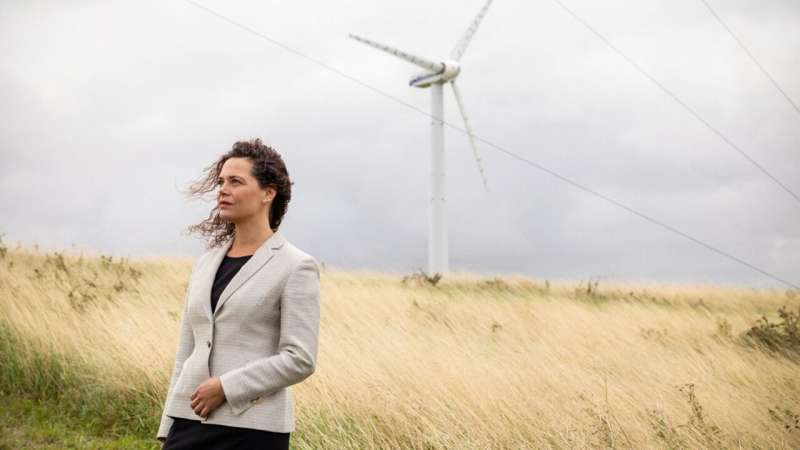This article has been reviewed according to Science X's editorial process and policies. Editors have highlighted the following attributes while ensuring the content's credibility:
fact-checked
trusted source
proofread
Q&A: We need to better understand public resistance toward wind turbines and solar cells

Wind turbines, solar cells, and, before long, Power-to-X plants are being installed all over Denmark, but the large plants are not always welcomed by the locals. This can inhibit the green transition, and it is an understudied research topic, according to Julia Kirch Kirkegaard, Associate Professor at DTU Wind.
When do the locals usually object to large power plants meant to aid the green transition?
Typically in the planning phase at public meetings or when the project is announced. It happens because at this point people have very little trust in the process and feel that they're not sufficiently included.
To install wind turbines or solar farms, you need a signed contract from a landowner and access to the land, and as Denmark is a small country, there's a lot of competition for land. As a result, there are a lot of secret agreements being made between project developers and landowners, which makes people feel deceived and powerless. If the decision has already been made, the meetings are just playing to the gallery.
So it's not just because people think the plants are eyesores?
The look or noise of the plants is rarely the cause of people's dissatisfaction. It's usually the feeling of not being heard or having any real chance of influence. And the large projects rarely create value for the local community.
Where does the resistance come from?
Looking at it from a historical perspective, some of the resistance comes from the huge technological development that has resulted in much bigger and more expensive wind turbines. In the 70s and 80s, small, local guilds installed small wind turbines. They were often local farmers teaming up with folk colleges to install some wind turbines and make a little profit from them.
But the modern development has eliminated the smaller players, and now it's the big international companies with big budgets who build and install wind turbines. I'm not suggesting that we go back to the old days, but I think it's worth considering whether we can introduce some kind of local co-ownership.
How big of an issue is it?
Resistance has been steadily increasing since 2001, and close to zero onshore wind turbines were installed in 2022. According to the Danish Energy Agency, one in five onshore wind turbine projects has been cancelled since 2009 due to objections from the locals. And Lars Aagaard, the Danish Minister for Climate, Energy, and Utilities, says that we won't achieve our climate goals—including our goal of quadrupling solar and onshore wind power—if we don't find a way to solve this problem.
Energy islands and Power-to-X plants will soon be installed in various locations in Denmark. How do you think the locals will react?
Power-to-X plants will take up an incredible amount of space, and I don't think people are quite aware how drastically it will change the way Denmark looks. I spoke to a local planner in Jutland who told me that the plant to be installed is the size of 2,000 football fields, which means that it's basically a re-industrialization of the Danish landscape. So the resistance from the locals is not likely to decrease anytime soon.
What is the solution?
Unfortunately, there's no silver bullet that can fix everything. But we need an impartial player in the process who won't be accused of having a hidden agenda. The Danish Energy Agency recently re-established a traveling renewable energy team that will visit and help the municipalities who hold most of the responsibility for onshore developments and have to deal with the resistance from the locals. A good start would be to set up a new kind of public meeting.
It's also necessary to rethink the design of the tender system to leave room not only for large-scale projects but also smaller projects that create value in more than just a financial sense. Perhaps some projects could compete by giving something back to the local community and making local citizens feel like they're involved and help make a difference in the green transition. You could also establish a kind of co-ownership deal, so that the locals get a share of the profits, or a local foundation is set up.
Will people have to learn to compromise if we are to achieve the goals of the green transition?
We need to move quickly, no doubt about it. And we also need the big wind farms, but people won't accept being silenced with some sort of compensation. The locals still need to actually be included. If we force the technology on them and expect them to just accept it, resistance will come swiftly.
So we really need to use an innovative mindset and take the communication aspect very seriously—we can't just say "we're the experts, so we know best." If we do, the resistance will be greater than ever.



















